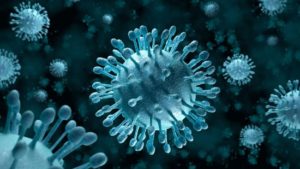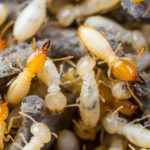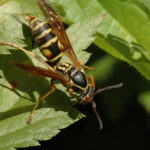25 interesting facts about viruses
 Few living creatures on Earth are as adaptable to survival and reproduction as viruses. True, their vitality has its limits, and their main problem is the fact that they are dangerous for their carrier. In the event of the death of the latter, the virus itself dies, and perhaps that is why in the process of evolution these microorganisms failed to occupy a dominant position on our planet.
Few living creatures on Earth are as adaptable to survival and reproduction as viruses. True, their vitality has its limits, and their main problem is the fact that they are dangerous for their carrier. In the event of the death of the latter, the virus itself dies, and perhaps that is why in the process of evolution these microorganisms failed to occupy a dominant position on our planet.
The average size of these microorganisms ranges from 20 to 500 nanometers. It is impossible to see them with the naked eye.
In wasp-braconids, laying larvae in the bodies of their victims, an ancient virus exists in the body, which is already millions of years old. It suppresses the victim’s immune system so that the larvae inside it develop normally.
Using retroviruses, you can “insert” the desired genes into human chromosomes. Thanks to them, scientists learned to clone animals.
The human genome contains information about countless ancient viruses that have long since disappeared from the face of the planet.
Depending on the external form, viruses are divided into four conditional groups. They are also divided into DNA-containing and RNA-containing.
Some cellular formations in the bodies of people are viruses that in ancient times merged with the human body in the course of evolutionary processes.
Mamaviruses are notable for the fact that they can infect other viruses.
Different types of viruses infect humans, animals, plants, bacteria and fungi. However, plant viruses are not transmitted to animals, and vice versa.
Scientists have long suspected the existence of viruses, but mankind was able to see them with their own eyes only in the last century, after the invention of powerful electron microscopes.
Viruses have genes.
Translated from the Latin language, the word “virus” simply means “poison”.
Viruses outnumber all other living organisms on Earth combined.
Influenza viruses alone are now known to more than 2 thousand species.
In the nineteenth century, an environmental catastrophe erupted in Australia due to over-bred rabbits that threatened the ecosystem and destroyed entire plant species. In the XX century, the problem was solved with the help of a special virus, which reduced the population of eared pests.
According to one theory, all living organisms on Earth, including viruses, once had a common ancestral microorganism.
Viruses can also be beneficial. For example, those that infect harmful bacteria in the human body, without harming the carrier in any way.
Mamaviruses are the largest of their kind, they even exceed some bacteria in size.
According to scientists, up to 40% of human DNA consists of the remains of ancient viruses.
For the first time, the existence of viruses was scientifically proven by the Russian scientist D. Ivanovsky in 1892.
According to another scientific theory, life on Earth appeared after the virus took root in a certain bacterium during evolution, thereby forming the cell nucleus and, accordingly, the first cell.
The viruses themselves do not have cells, and they are simply a bunch of chemical elements until they enter the host organism.
They do not know how to convert food into energy.
Oddly enough, but viruses are neither living nor dead.
In the UK in 1992, a local epidemic broke out, the source of which was found with difficulty. It turned out that it was caused by a virus that took root inside the bacteria that lived in the local cooling tower.
The cause of some cancers is viruses.



























